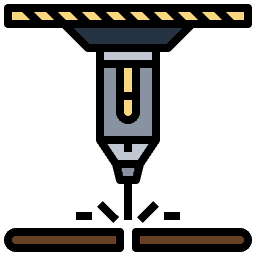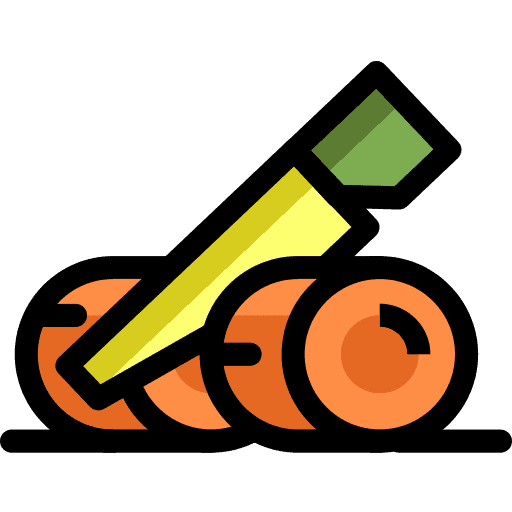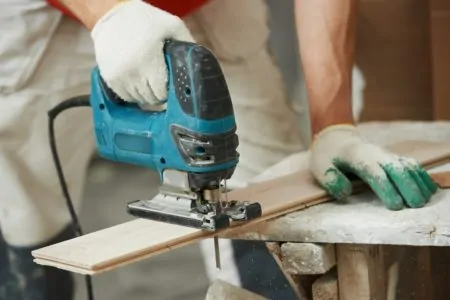It is easy to take power saws for granted at times, but they have made an enormous difference to how we cut materials. Tasks that would have previously taken several minutes can now be completed in seconds, without physical exertion.
Reciprocating saws are among the most versatile saw types that are available. They are particularly useful for demolition, construction, and remodeling tasks, combining the precision of a knife with the cutting power of a power saw.
With many models to choose from, it can be difficult to know which one to choose. That is why we have reviewed seven of the best reciprocating saws that are available today, chosen for their cutting power, precision, and how user-friendly they are.

- Variable speed control
- Various blade positions
- Heavy-duty

- 120-volt motor
- Toolless blade replacement
- Speed control trigger

- Weighs 7 pounds
- 20-volt battery
- Variable speed setting
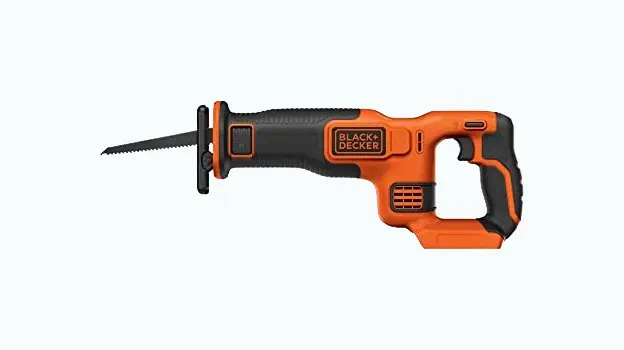
- Heavy-duty
- 3,000 strokes per minute
- Ideal for confined areas
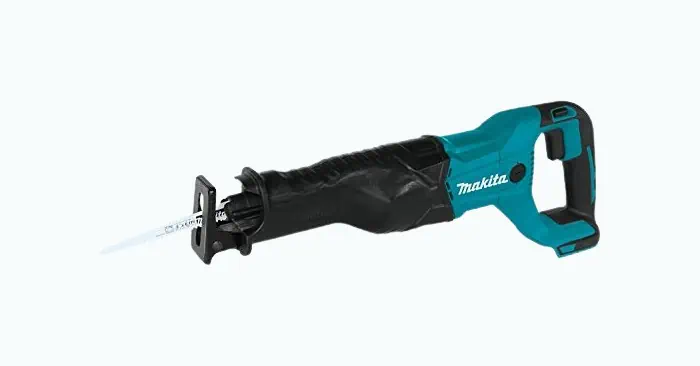
- Compact and easy to use
- Refined crank mechanism
- Rubberized handle

- Durable 120-volt motor
- Counterweighted
- Includes a carry case

- Long-lasting 18-volt battery
- Toolless blade replacement
- 5-year Warranty
Review Methodology: At Sensible Digs, we pride ourselves on our thorough hands-on research and professional analysis. We measure and evaluate the best reciprocating saws from a user’s perspective, comparing their performance against a set of carefully chosen criteria. Our assessment is based on a range of factors, including power, speed, versatility, and design choices. We test each saw’s performance, track their results, and rank them based on our findings. We draw on our extensive experience and present you with the facts, so you can make an informed decision on which saw best suits your needs.
The Best Reciprocating Saws of 2024
Finding the right reciprocating saw for the job can be daunting, especially if you aren’t sure which models are the most suitable for specific tasks. To help you, we have reviewed seven of the best reciprocating saws that are currently available. We chose these saws for their cutting power, size, weight, and how easy they are to use.
DeWALT DWE304 10-Amp Reciprocating Saw
Best Reciprocating Saw for Metal
This DeWALT reciprocating saw is ideal for cutting metal thanks to its powerful 10-amp motor.
A four-position blade clamp enables you to cut from various angles. There is also a fixed shoe for improved stability and cutting accuracy, as well as a keyless blade clamp for quick, easy blade replacement.
The saw makes up to 2,800 strokes per minute and has a variable speed trigger that allows you to adjust the speed to effectively cut through materials while maintaining control.
This versatile reciprocating saw can be used to cut:
- Wood
- Light to heavy gauge metals
- Plaster
- Plastic
- Rubber
- Fiberglass
- Composite material
What We Like
Variable Speed Control
This saw has a switch that allows you to easily adjust the speed to suit your preferences and the specific task you are working on. You will be able to make cuts in various materials without having to switch to a different tool.
Versatile
You can replace the saw blade by pulling a lever, without needing any extra tools. You can also install the blade in different positions, which will allow you to cut materials at various angles, increasing the saw’s versatility.
Ideal for Heavy-Duty Projects
The 10-amp motor makes this saw a great option for heavy-duty projects. It will be able to cut through tough materials while active for prolonged periods.
Affordable
Despite being versatile and powerful, this saw won’t break the bank. This is a major positive as most saws that are suitable for heavy-duty projects are quite expensive.
What We Don't Like
Excessive Vibration
Reciprocating saws are prone to vibrations when cutting, and as they are handheld this will affect their accuracy. Some customer reviews mention this saw vibrating more than expected during use.
Product Specs
| Product Dimensions | 19.2 x 9.4 x 4 inches |
| Material | Plastic |
| Warranty | 3-year manufacturer’s warranty |
| Weight | 7 pounds |
| Type | Corded |
Our Ratings
User Experience
DeWALT DWE305 Corded Reciprocating Saw
Best Corded Reciprocating Saw
This DeWALT 120-volt reciprocating saw is well-suited to professional work. It has a maximum speed of 2,900 strokes per minute, with a stroke length of 1 inch to 1.8 inches for fast and efficient cutting.
Replacing the blade of the DeWALT DWE305 is quick and easy as it features a toolless lever-action blade clamp. The rubber handle makes it comfortable to hold for prolonged cutting.
For greater versatility, you can adjust the cutting tempo with the variable speed trigger, helping you match it to the material you are working on.
What We Like
Ideal for Heavy-Duty Projects
The 120-volt motor and 2,900 strokes per minute mean this saw is ideal for heavy-duty projects. Its powerful motor means it will be able to cut through tough materials and cope with extended use.
Easy Blade Replacement
You don’t need to buy any extra tools to replace this saw’s blade. It is easy to remove and replace.
Speed Control
The saw has a trigger that regulates the speed of its strokes to suit the material you’re cutting through.
What We Don't Like
Overheating Issues
Some users were concerned about the saw overheating, as this could shorten the life of the blade and motor and make the tool uncomfortable to hold.
Quite Heavy
At 8 pounds, some users find this saw too heavy to hold up for sustained use. This will depend on the individual user, but it does mean the saw requires some extra arm strength to use.
Product Specs
| Product Dimensions | 19.2 x 9.4 x 4 inches |
| Material | ABS |
| Warranty | 3-year limited warranty |
| Weight | 8 pounds |
| Type | Corded |
Our Ratings
Personal Perspective
DeWALT DCS387P1 20-Volt Cordless Reciprocating Saw
Best Cordless Reciprocating Saw
As well as being cordless and suitable for tight areas, this reciprocating saw is compact and lightweight at just 6.4 pounds. This will allow you to use it for prolonged periods without placing a strain on your arms.
It has a 4-position blade clamp that allows for flush cutting with a fast cutting speed of up to 2,900 strokes per minute. If you need to cut in dimly lit environments, this model has an LED light that will help you see what you are doing.
Given its total length is 14.5 inches, the DCS387P1 can fit into tight, confined spaces. It also has a durable 20 lithium-ion battery, which is ideal for constant use over long periods.
What We Like
Lightweight and User-Friendly
This saw is compact and lightweight at 7 pounds, making it very easy to use. Heavy tools will make your hands and arms tire more quickly, so this is a great option for prolonged tasks.
High-Voltage Battery
Battery-powered tools are generally believed to be less powerful than their cable alternatives. However, this DeWALT saw’s 20-volt battery is powerful and durable, so you won’t have to trade power for greater freedom.
Variable Speed Setting for Faster Cutting
You can adjust the speed to suit the material you are cutting, helping you work faster and more efficiently. This will help you find the right balance between power and easy handling.
What We Don't Like
No Anti-Vibration Technology
Some user reviews mention struggling to make accurate cuts due to the saw vibrating too much during use. There are also some complaints that it is too noisy.
Product Specs
| Product Dimensions | 14.8 x 3.5 x 7.5 inches |
| Material | Plastic |
| Warranty | 3 years |
| Weight | 7 Pounds |
| Type | Cordless battery |
Our Ratings
Community Feedback
Black+Decker 20V MAX Reciprocating Saw
Best Budget Reciprocating Saw
This Black+Decker reciprocating saw is affordable, but that doesn’t mean it is cheap in terms of quality or performance. Its 20-volt battery gives you freedom of movement and versatility without sacrificing power.
Tool-free blade replacement means you can change the blade quickly and easily. The pivoting shoe makes the saw easier to use and keeps it stable even when cutting at an angle.
It has a variable speed trigger to change the stroke rate, up to a maximum of 3,000 strokes per minute. The saw includes a blade with a 7 to 8-inch stroke length and a keyless blade clamp.
What We Like
Affordable
Compared to similar saws, this Black+Decker saw is affordable. It will provide excellent cutting power while being budget-friendly. However, this is largely due to it not including a battery.
Heavy-Duty
Despite being affordable, owners praise the cutting power of this Black+Decker saw. It will trim trees and cut through metal bolts with ease.
Ideal for Confined Areas
As it is compact and lightweight, this saw is ideal for home use, especially when working in tight areas such as around your plumbing.
What We Don't Like
Batteries Not Included
The battery and charger are sold separately from the saw, adding to the overall cost. Most cordless saws include a battery, but you could save money if you already have a suitable Black+Decker battery for other tools.
Product Specs
| Product Dimensions | 15.6 x 3.4 x 7.1 inches |
| Material | Plastic |
| Warranty | 2-year limited warranty |
| Weight | 3.9 pounds |
| Type | Cordless |
Our Ratings
First-Hand Impression
Makita XRJ04Z 18V Lithium-Ion Cordless Recipro Saw
Best Reciprocating Saw for Professionals
The Makita XRJ04Z is a durable, powerful saw. As it is cordless, it is ideal for tight spaces that lack access to a power supply. Its 18-volt lithium-ion slide battery has a sufficient life to get you through long tasks on a single charge.
Despite being smaller than many of its high-end competitors, it provides plenty of cutting power to complete tasks quickly and smoothly. It has a maximum speed of 2,800 strokes per minute and won’t overheat during prolonged use.
With a variable trigger that allows you to control the speed and a toolless blade replacement mechanism, this saw combines power and convenience. The stroke length is between 1 and 1.4 inches for fast, smooth cutting.
What We Like
Compact and Easy to Use
This Makita saw is compact and easy to use. Despite weighing 8 pounds, its design means it is comfortable to hold and shouldn’t fatigue your hands and arms as quickly as most of its competitors.
Refined Crank Mechanism
This saw features a refined crank mechanism, designed to minimize blade deflection and reduce vibrations.
Comfortable
The soft rubberized handle provides a strong and comfortable grip while cutting. This complements how compact the saw is and ensures it is as easy to use as possible.
What We Don't Like
Battery & Charger Not Included
Unfortunately, you will need to buy the saw’s battery and charger separately, increasing its overall cost.
Product Specs
| Product Dimensions | 4.7 x 20.5 x 8.6 inches |
| Material | ABS |
| Warranty | 3-year limited warranty |
| Weight | 7.9 pounds |
| Type | Cordless |
Our Ratings
User Experience
Milwaukee 6519-31 120-Volt Corded Reciprocating Sawzall
Best Reciprocating Saw for Demolition
This Milwaukee corded saw’s impressive power and size mean it is a great choice for demolition jobs. It features a 120-volt motor and a blade speed of up to 3,000 strokes per minute, enough to cut through almost any material you are likely to encounter.
Thanks to its Quick-Lock system, the blade can be replaced using three easy steps: pulling the latch, replacing the blade, and then closing the latch.
The gear-protecting clutch is a unique feature that defends the inner components, prolonging the saw’s lifespan. This also allows it to cope with the demands of heavy-duty demolition work.
What We Like
Powerful and Durable
The saw’s 120-volt motor and blade speed of up to 3,000 strokes per minute make it powerful and durable enough for the rigors of demolition projects.
Counterweighted to Reduce Vibrations
An internal counterweight reduces the vibrations caused by the blade’s movement. This helps ensure greater control when cutting.
Carry Case
This product includes a carry case that is ideal for convenient storage and transportation. The case should also reduce the amount of maintenance required and increase its long-term durability.
What We Don't Like
Expensive
This Milwaukee saw is more expensive than most of its competitors, despite having similar features and performance. However, it does include a carry case.
Product Specs
| Product Dimensions | 22.3 x 11.1 x by 5.3 inches |
| Material | Plastic |
| Warranty | Warranty available on request |
| Weight | 7.1 pounds |
| Type | Corded |
Our Ratings
Personal Perspective
Milwaukee 2620-20 M18 18-Volt Sawzall Cordless Reciprocating Saw
Best Reciprocating Saw for Pruning Trees
This cordless reciprocating saw from Milwaukee is perfect for pruning trees as it is powered by an 18-volt high-capacity lithium-ion battery. Being cordless is essential for pruning as you are unlikely to have access to a power outlet without using a long extension cable.
The saw also features a gear-protecting clutch, increasing its durability and ensuring it continues to work smoothly. This also reduces the strength of impacts and vibrations that the user feels.
For quick, simple blade replacement, the included clamp is very useful. When combined with the speed trigger, this is a versatile saw that will help you complete your tasks quickly and safely.
Quick Tip
What We Like
Quick-Charging and Long Battery Life
The 18-volt battery is ideal for extended use, which is very important when using a cordless saw. User reviews praise the short recharge time, so the saw won’t need to be out of action for long between jobs.
Easy and Fast Blade Change
Replacing the blade is quick and straightforward as no extra tools are required. If you need the saw for multiple tasks, this versatility will be very helpful, but it is less important if you only want it for pruning.
5-Year Warranty
Milwaukee provides a 5-year warranty with this saw, which is very generous for a power saw. Most of its competitors are only protected by 3-year warranties, so this is a mark of Milwaukee’s confidence in its products.
What We Don't Like
Obstructed View
Some owners report that the large rubber column at the front of the saw obstructs their view when cutting with it.
Product Specs
| Product Dimensions | 18.9 x 6.4 x 3.9 inches |
| Material | Rubber |
| Warranty | 5-year limited warranty |
| Weight | 1 pound |
| Type | Cordless |
Our Ratings
Community Feedback
| Product | Best | Dimensions | Material | Warranty | Weight | Type |
|---|---|---|---|---|---|---|
| DeWALT DWE304 10-Amp Saw | Metal | 19.2 x 9.4 x 4″ | Plastic | 3-years | 7 lbs | Corded |
| DeWALT DWE305 Corded Saw | Corded | 19.2 x 9.4 x 4″ | ABS | 3-year limited | 8 lbs | Corded |
| DeWALT DCS387P1 Cordless Saw | Cordless | 14.8 x 3.5 x 7.5″ | Plastic | 3-years | 7 lbs | Cordless |
| Black+Decker 20V MAX Reciprocating Saw | Budget | 15.6 x 3.4 x 7.1″ | Plastic | 2-year limited | 3.9 lbs | Corded |
| Makita XRJ04Z 18V Lithium-Ion Saw | Professionals | 4.7 x 20.5 x 8.6″ | ABS | 3-year limited | 7.9 lbs | Cordless |
| Milwaukee 6519-31 Corded Sawzall | Demolition | 22.3 x 11.1 x x 5.3″ | Plastic | Available on request | 7.1 lbs | Corded |
| Milwaukee 2620-20 M18 Sawzall | Pruning Trees | 18.9 x 6.4 x 3.9″ | Rubber | 5-year limited | 1 lb | Cordless |
What Is a Reciprocating Saw?
Power saws are designed to cut through material without the user having to physically move the saw back and forth. This means cutting tasks that would have been physically demanding and taken several minutes or even hours can now be completed quickly and with far less effort.
Reciprocating saws are handheld saws with narrow blades that are designed to pierce through materials and cut them accurately. They are similar to a handheld jigsaw with a great deal of cutting power that makes them ideal for cutting drywall into shape.
A reciprocating saw is a powerful, versatile tool that is ideal for cutting:
- Wood
- Ceramics
- Plaster
- Drywall
- Metal
What Are Reciprocating Saws Used For?
Reciprocating saws are part of the tool collections of many professionals and passionate DIYers. They are mainly used for demolition, cutting, and ripping materials with ease. As they are handheld, they are also ideal for cutting drywall into shape.
Thanks to their comfortable grip, exposed blade, and simple design, reciprocating saws are used in various projects:
Cordless vs. Corded Reciprocating Saws
As with most power tools, reciprocating saws are available in two types: corded and cordless.
The battery packs for cordless saws are 9 or 12 volts, with the capacity varying from model to model. As cordless reciprocating saws use battery power, they allow you to make cuts anywhere. You won’t need to stay close to a power socket.
Despite being more restrictive, corded reciprocating saws possess more power due to their direct electric power source. This means they are more suitable for heavy-duty cutting than cordless saws.
Although cordless reciprocating saws provide more freedom, you will have to deal with the hassle of the battery running out. You can minimize this by buying a high-quality saw and keeping a spare battery charged. However, this will cost extra money, so it is usually best to choose a corded saw if you will mostly be cutting indoors.
How to Choose the Best Reciprocating Saw
You will have many reciprocating saws to choose from, so it can be challenging to know which models are the best. You can narrow your search significantly by considering the aspects below. Just one of these features could make or break your choice of saw:
How to Use a Reciprocating Saw
1. Choose the Blade
Reciprocating saws can use several blade types, so you need to choose the right one for the material you are cutting. Take some time to familiarize yourself with the different types of reciprocating blades.
Types of Blades
Here are the recommended blades for different materials:
- Metal pipes and nails: Fine-tooth blade; resembles a hacksaw.
- Wood: Coarse blade.
- Plaster or drywall: Very coarse blade.
- Stone, ceramic, or cast iron: Toothless blade coated with tungsten carbide abrasive grit.
Keep In Mind
Blade Size
The average blade size for reciprocating saws is 6 inches. However, there are smaller jigsaw-type blades and larger ones of up to 12 inches to ensure you can complete your work as quickly and neatly as possible.
Remember
2. Insert Blade
To insert the blade correctly:
- Slide it in: Slide the end of the blade into the front part of the saw until it won’t go any further.
- Clamp: Use the blade clamp to secure the blade in place and ensure it won’t move when you turn the saw on later.
3. Adjust the Shoe
This isn’t essential, but it can be a good idea to tilt the shoe slightly when cutting hard materials. This will give the blade a sharper angle.
How the shoe is aligned will also influence blade depth. This is particularly important if you are cutting any material where you can’t see the other side of it. It is best to cut with a shorter blade to reduce the risk of damaging the surrounding material.
4. Squeeze the Trigger
With the saw set up, simply press the trigger to activate it and start cutting. Make sure you ease into it at a low speed, then gradually increase the strokes per minute when you feel comfortable with how you are cutting.
5. Continue Cutting
Try to maintain consistent pressure throughout the cutting process. Keep a steady grip and you should be able to complete your cut smoothly and safely.
6. Blade Maintenance
As reciprocating saws are often used for heavy-duty work or cutting through tough materials, it is inevitable that their blades will dull, potentially quite quickly. They are designed with this in mind, so you should be able to replace the blade quickly and easily as soon as you notice that it is no longer cutting effectively.
It is also possible that the blade will bend during use. If this happens, you can remove it and hammer it flat again. Alternatively, if the dent is near the tip of the blade, you can simply cut off the damaged piece. A short blade will be far more useful than a defective one that makes messy cuts and ruins material.








